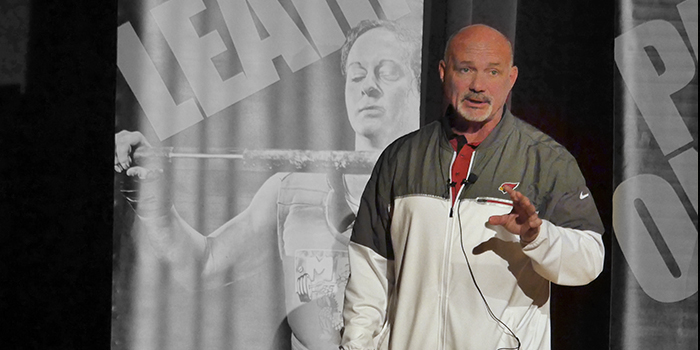
If you missed part one of Buddy Morris' Sports Performance Summit Presentation, read the article and watch the video to get caught up. If you want to jump right into part two, here's a short summary of points from the opening segment:
- Constant learning is the key to success.
- Genetics, in part, determine how hard you're going to have to work to be successful at a given activity.
- The environment you grow up and live in will guide you toward a particular path in life. If you don't like that path, it's up to you to change it.
In this video, part two of his presentation, Buddy Morris begins discussing proper and improper use of knowledge, how to spot gimmicks, and what to do when things don't go according to plan.
He begins by continuing his discussion on why speed ladders do not improve acceleration. The simple answer: it's a gimmick to make you think you need fancy equipment and exercises to improve. If you want to increase the acceleration of your athletes, you don't need a whole lot. In fact, Buddy's list is pretty short: a barbell, a track or field to run on, some boxes to jump on, and some medicine balls to throw. The simplest methods produce the most profound responses in the human body.
Buddy then talks about the knowledge of an expert and the knowledge of a guru. He says that gurus have no awareness of the limits of their knowledge and will therefore never mention it. They're all-knowing and want everyone to ask them questions. Conversely, the expert will, "often refer to gaps in their understanding, the complexity of the subject matter, and the existence of competing theories or conflicting evidence."
WATCH: Buddy Morris SPS Presentation — Genetics, Environments, and Learning
This leads into how Buddy evaluates the readiness of his athlete's on a daily basis: if your athletes won't stop talking to each other during warm-ups and want to chat about everything, they're ready to go. If they're quiet, you need to adjust the day's training, because they're not ready. He uses a specific example with Carson Palmer to illustrate the importance of correctly reading the readiness of your athletes.
Buddy then talks about other gimmicks he often sees in training. Sand training? Gimmick. Standing on a stability ball while performing an exercise? Gimmick. If someone wants to be a guru and badly wants you to come to them to ask questions about a supposedly innovative training method, steer clear of them.
The final point of Buddy's presentation is planning. Everyone is familiar with the phrase, "If you fail to plan, you plan to fail." Buddy adds a second part: nothing ever goes according to plan. So obsessing over your periodization plan is going to do you no good once you get into the gym and the program meets the real world. You will have bad days and you have to know how to adjust. This means that you must understand all of the genetic and environmental factors Buddy discussed in part one of his presentation. Understanding these factors will enable you to better adjust your training as you encounter both good and bad days.
By the minute:
- (0:42) The simplest methods have the most profound responses
- (2:15) Difference between experts and gurus
- (3:22) Assessing athletes on a daily basis
- (4:41) Sand training
- (7:17) If you fail to plan, you plan to fail...but nothing goes according to plan
- (10:35) The shorter the time to execute the athletic skill, the more genetics matter









